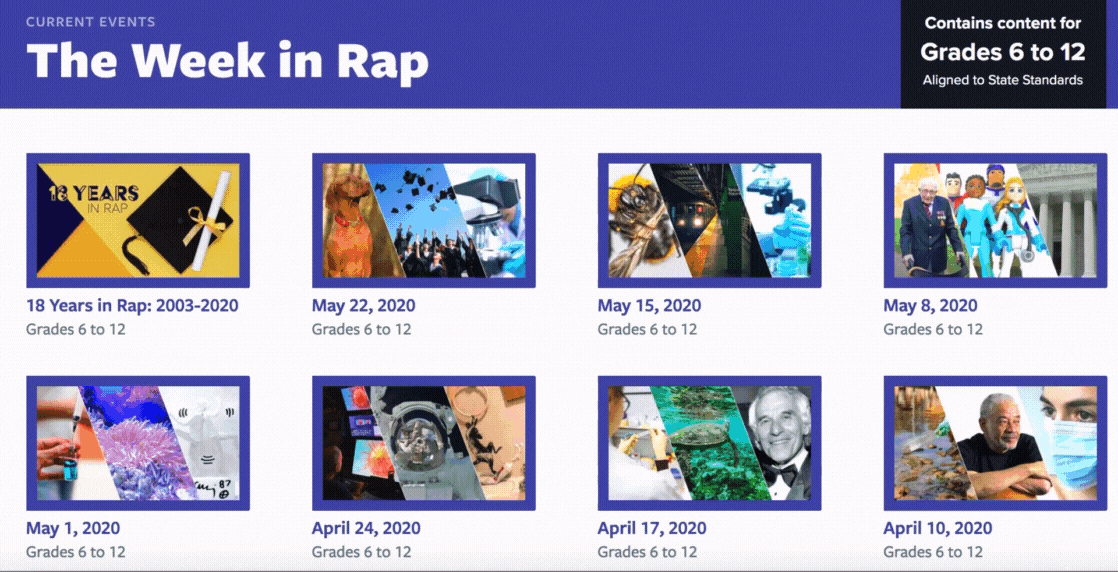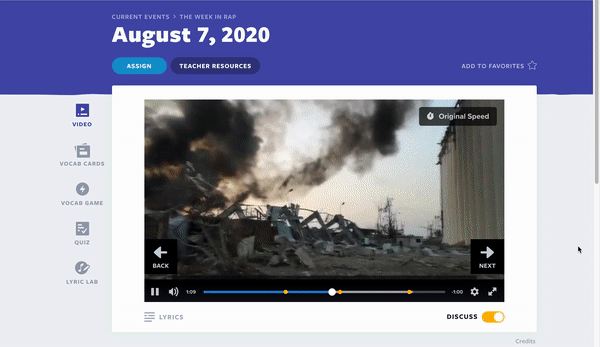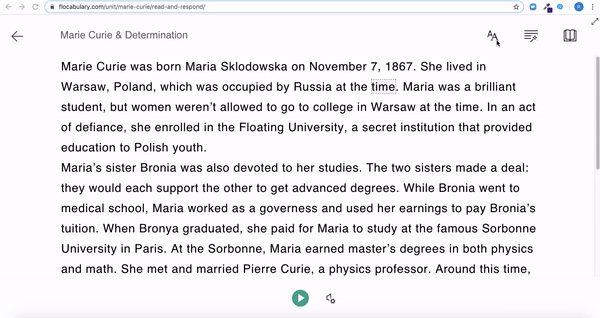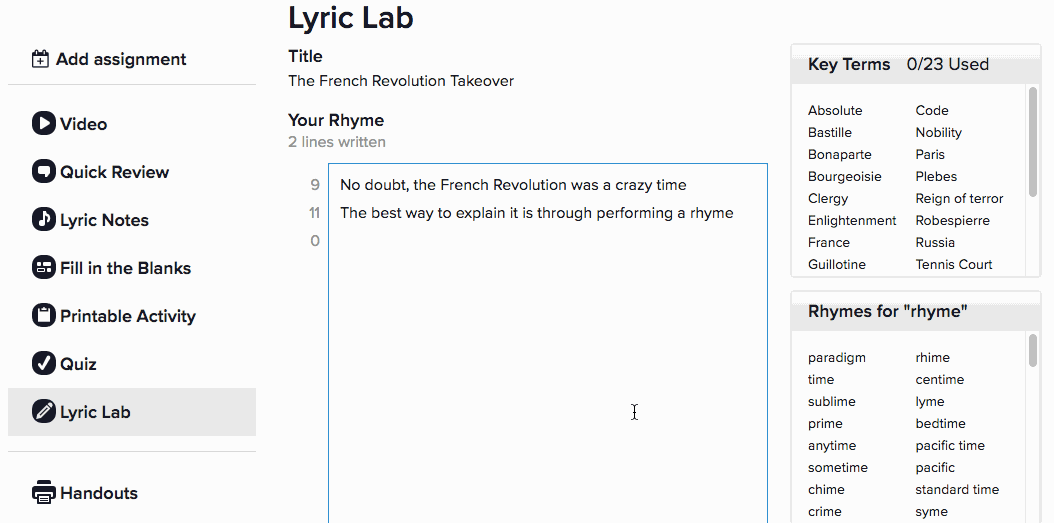
6 Ways to use Flocabulary for classroom routines
Having strong procedures and routines is one of the most important things you can do to support learning. When teachers establish recurring tasks or activities, it increases efficiency and expectations for the students. Here are a few inspirational ideas using Flocabulary that can fit into moments that will maximize instructional time and overall make your virtual teaching life easier!
@Flocabulary has some great SEL lessons, which students desperately need right now. I am going to use these as my last set of distance lessons this year! As an added bonus, I can print the lessons for the students who do not have access to online activities!
— Diana Caldwell (@lmscaldwell) May 1, 2020
I'm looking at @Flocabulary differently. When I used it before I thought it was good for introducing a unit. Now, I'm seeing the Racial Justice, Financial Literacy & SEL components and I'm excited to introduce these to my students. #lifeskills
— Robyn Bryant (@NerdyBryant) July 16, 2020
Build classroom community and ensure classroom kindness by using one of 40+ Flocabulary SEL lessons each week and focusing on that topic. Using these lessons covering topics like, managing frustration, building empathy, and perspectives on race to enhance the classroom community, learning environment and develop student ownership of their learning.

If you didn’t know, now you know: by the time you’re pouring coffee on Friday morning, there’s a brand new, TOTALLY AWESOME, current events rap music video waiting for you – the Week in Rap. The week in rap is separated by grade band! The Week in Rap (grades 6-12) & The Week in Rap Jr. (grades 3-5).
In 2 minutes, Flocabulary gives you a week’s worth of current events, rapped and loaded with relevant, engaging educational power. This is especially important this year, as our students’ lives have been inevitably touched by uncertainty in the face of the COVID-19 pandemic.
This is a perfect Friyay ritual with your students! Make this a routine that your students look forward to and pair it with the meaningful activities embedded within each Week in Rap such as vocabulary practice, vocab cards, quizzes, and lyric lab (along with handouts)!
It’s time for your 15 minutes of fame! Did you know there’s a shout out contest that you and your students can participate in? Write a rap or poem about your take on a story from that week that answers the following prompt: How does it relate to you, your community, and the world at large?

When showing videos in class, we want our students to watch actively rather than passively: to comprehend, not just consume. We want our students to be active viewers.
With Flocabulary’s discuss mode for interactive video, students are watching with purpose and are fully tuned in!
When discuss mode for the video is enabled, the video will pause at key moments to provide questions for discussion and exploration of the topic. Click play to begin or skip the next question!
It can be tough to squeeze in specific subjects in your tight schedule. Create opportunities to bring other subjects into your ELAR block with Flocab’s Read & Respond.
Read & Respond provides short, assignable reading passages and practice questions that are based on content presented in the unit’s video and lyrics. Students can dive deeper and think more critically about the unit’s content and simultaneously practice their reading skills. They are based on both fiction and non-fiction texts, and the workflow emulates a similar structure to what students will experience on high-stakes tests.
Read & Respond is a flexible teaching tool that can be tailored to different instructional approaches. It can work both as a front-of-classroom approach or independent activity for each student.

Use the power of Flocabulary and Microsoft’s Immersive ready with Read and Respond. It can be overwhelming for emerging and struggling readers, especially with virtual learning! This helps alleviate the stress of independent reading! Learn more about the integration here.
In our 10 Best Practices using Flocabulary blog post, we shared how this is a great way to address learning gaps at the end of every unit. Assessments are assignable and autograded (with a school subscription). Students’ scores are recorded digitally on a comprehension grid illustrating these achievement gaps so you can address them promptly.
Jennifer Findley, a 5th grade teacher in Georgia, advises, “Use the results of the assessment as a starting point for small group re-teaching.” We couldn’t agree more, Jennifer!
Learn more about using Flocabulary for pre and posts tests here!

Lyric Lab is an interactive writing tool where students can create their own academic rhymes. There is even a sidebar tool that will auto populate words that rhyme with the last word in each sentence. There are countless ways to use Lyric Lab, such as recapping what was taught!
- Learn how one teacher showcases student voice with Lyric Lab here.
- Thinking about project based learning? One teacher does just that with the power of Lyric Lab!
There are so many ways to make Flocabulary a part of your classroom routine! Share below how you have or plan on using Flocab in the comments below!
